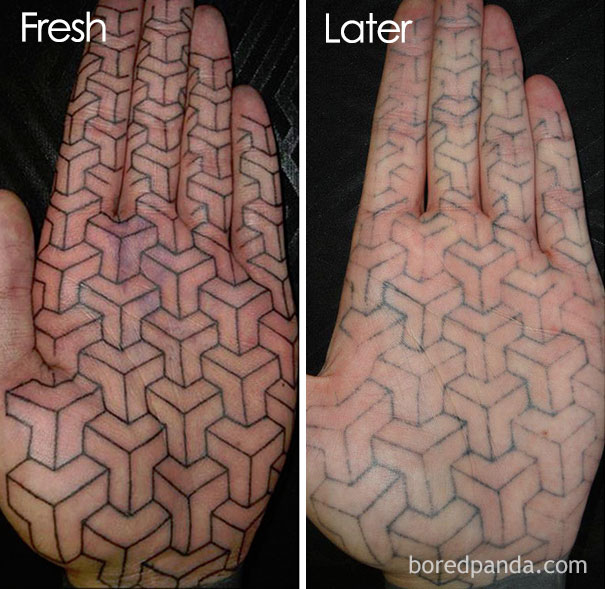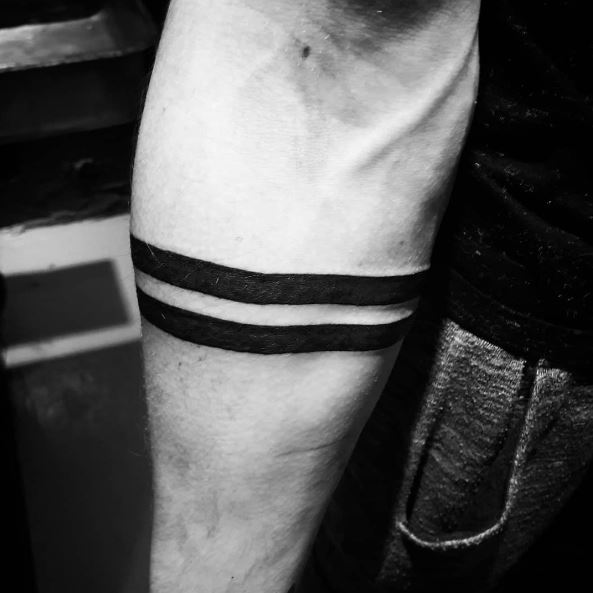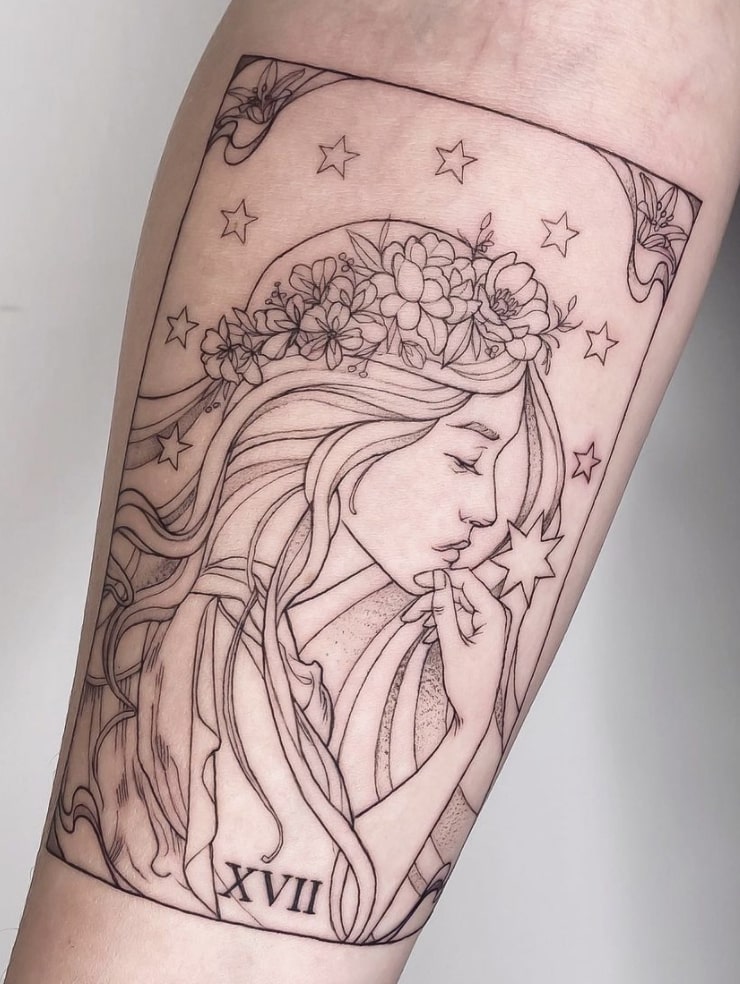
Okay, buckle up buttercups, because we’re diving deep into the captivating world of fine-line tattoos! You’ve seen them gracing the skin of your favorite celebrities, adorning the arms of your besties, and popping up all over your Instagram feed. But what exactly is it about these delicate works of art that has everyone buzzing? Let’s unravel the mystery and explore why fine-line tattoos have become the must-have body art trend.
Why Are Fine-Line Tattoos So Popular? Unveiling the Delicate Appeal
It’s more than just a trend; it’s a revolution in how we perceive tattoos. Gone are the days when tattoos were solely associated with bikers and sailors. Fine-line tattoos have shattered those stereotypes, offering a sophisticated, minimalist, and deeply personal form of self-expression.
1. The Allure of Subtlety: A Whisper, Not a Shout
In a world that often screams for attention, fine-line tattoos offer a refreshing alternative. They’re not about bold pronouncements; they’re about whispered secrets, intimate details, and personal stories etched onto the skin with the utmost delicacy. This subtlety is a major draw for those who prefer a more understated aesthetic. They can be easily hidden, allowing for discretion in professional settings or personal preferences. It’s a tattoo that speaks volumes without ever raising its voice.
2. Elegance and Grace: A Touch of Artistic Finesse
Think of a ballerina’s graceful movements, a calligrapher’s delicate strokes, or the intricate details of a botanical illustration. Fine-line tattoos evoke that same sense of elegance and artistic finesse. The thin lines create a delicate and refined aesthetic that is undeniably beautiful. They transform the skin into a canvas for intricate designs that are both captivating and timeless.
3. Minimalist Magic: Less is More, Always
The minimalist movement has taken the world by storm, and fine-line tattoos are a perfect embodiment of its principles. In a world cluttered with information and excess, minimalism offers a sense of calm and clarity. Fine-line tattoos embrace this philosophy, focusing on clean lines, simple shapes, and meaningful symbolism. They prove that less is truly more, creating powerful statements with minimal ink.
4. The Versatility Factor: A Design for Every Soul
From intricate floral patterns and celestial constellations to geometric shapes and delicate script, the possibilities are endless when it comes to fine-line tattoo designs. This versatility is a major factor in their popularity. Whether you’re drawn to nature, spirituality, art, or personal symbolism, there’s a fine-line tattoo design that can perfectly capture your essence.
5. Location, Location, Location: The Body as a Canvas
Fine-line tattoos are incredibly versatile when it comes to placement. They can be placed virtually anywhere on the body, from delicate wrist tattoos and subtle finger designs to intricate back pieces and elegant ankle adornments. This flexibility allows for creative expression and personalized placement, making each tattoo a unique work of art. The placement itself can add to the symbolism and meaning of the tattoo.
6. The Pain Factor: A Gentle Introduction to Ink
Let’s be honest, the thought of getting a tattoo can be a little intimidating, especially for first-timers. But fine-line tattoos are often perceived as less painful than traditional tattoos due to the smaller needles and less intense application. This makes them a great option for those who are hesitant about the pain factor but still want to experience the art of tattooing. It’s a gentle introduction to a world of self-expression.
7. The Celebrity Influence: Setting the Trend
Let’s face it, celebrities have a huge influence on trends, and fine-line tattoos are no exception. From Ariana Grande’s delicate bee tattoo to Zoe Kravitz’s intricate hand designs, celebrities have embraced fine-line tattoos, showcasing their beauty and versatility to a global audience. This exposure has undoubtedly contributed to their widespread popularity.
8. The Instagram Effect: A Visual Feast
Instagram is a visual platform, and fine-line tattoos are incredibly photogenic. Their delicate lines and intricate designs translate beautifully on camera, making them a perfect subject for sharing and inspiration. The hashtag #finelinetattoo is filled with stunning examples of this art form, creating a visual feast for tattoo enthusiasts and attracting new followers to the trend.
9. The Personal Connection: A Story Etched in Ink
More than just aesthetics, fine-line tattoos often hold deep personal meaning. They can represent significant events, cherished memories, loved ones, or personal beliefs. The delicate nature of the design adds to the intimacy and emotional connection, making each tattoo a unique and powerful expression of the individual’s story.
10. The Evolving Tattoo Culture: Embracing New Styles
The tattoo industry is constantly evolving, with new styles and techniques emerging all the time. Fine-line tattoos represent a shift towards more delicate, minimalist, and artistic designs. They reflect a broader acceptance of tattoos as a form of self-expression and a celebration of individual style. It’s a sign that tattoo culture is becoming more inclusive and diverse.
11. Healing Process: A Quicker Recovery
Generally, fine-line tattoos tend to heal faster than traditional, heavily inked tattoos. Because the lines are thin and less ink is deposited into the skin, the healing process is often quicker and less complicated. This is a major plus for those with busy lifestyles who don’t want to spend weeks meticulously caring for a healing tattoo.
12. The Price Point: Often More Affordable
While the price of a tattoo depends on the size, complexity, and artist’s skill, fine-line tattoos can often be more affordable than larger, more elaborate designs. This makes them accessible to a wider range of people, allowing more individuals to express themselves through body art.
13. Layering and Combining: Building a Visual Narrative
The subtlety of fine-line tattoos allows for layering and combining multiple designs to create a larger, more complex visual narrative. This is a popular trend, with people adding to their existing fine-line tattoos over time to create a personalized and evolving work of art. It’s like building a story on your skin, one delicate line at a time.
14. A Timeless Appeal: Beyond the Trend
While trends come and go, the appeal of fine-line tattoos lies in their timeless elegance and personal significance. They’re not just a fleeting fad; they’re a form of art that can be appreciated for years to come. Their delicate nature and minimalist aesthetic ensure that they will remain a stylish and meaningful form of self-expression.
15. The Artist’s Skill: A Testament to Precision
Creating a beautiful fine-line tattoo requires a high level of skill and precision. The thin lines demand meticulous attention to detail and a steady hand. The popularity of fine-line tattoos has also highlighted the talent and artistry of tattoo artists who specialize in this style, showcasing their ability to create stunning works of art on the human canvas.
Conclusion: A Delicate Revolution in Body Art
Fine-line tattoos have undeniably taken the world by storm, and for good reason. Their subtlety, elegance, versatility, and personal significance make them a captivating and meaningful form of self-expression. They represent a shift in tattoo culture, embracing minimalism, artistic finesse, and individual storytelling. Whether you’re a seasoned tattoo enthusiast or a first-timer, fine-line tattoos offer a delicate and beautiful way to adorn your skin and express your unique personality. So, go ahead, explore the possibilities, and let your skin become a canvas for your own personal masterpiece.
FAQs About Fine-Line Tattoos
1. Do fine-line tattoos fade faster than traditional tattoos?
Generally, yes. Because the lines are so thin and less ink is used, fine-line tattoos can fade faster over time compared to traditional, bolder tattoos. Proper aftercare and sun protection are crucial to prolong their vibrancy.
2. Are all tattoo artists skilled in fine-line tattooing?
No, not all tattoo artists specialize in fine-line work. It requires a specific skill set and precision. It’s essential to research and find an artist who has a proven track record and portfolio showcasing their expertise in fine-line tattoos.
3. What is the best way to care for a fine-line tattoo?
Follow your artist’s aftercare instructions diligently. This typically involves keeping the tattoo clean, moisturized, and protected from the sun. Avoid excessive rubbing or scratching the area during the healing process.
4. Can fine-line tattoos be easily removed?
Yes, laser tattoo removal is generally effective on fine-line tattoos. The thin lines and smaller amount of ink make them easier to target and break down with laser treatments compared to heavily inked tattoos. However, multiple sessions may still be required.
5. What kind of designs work best for fine-line tattoos?
Simple, clean designs with clear lines and minimal shading tend to work best for fine-line tattoos. Intricate patterns, geometric shapes, delicate floral motifs, and meaningful symbols are all popular choices. Avoid overly complex or crowded designs, as the lines may blur together over time.



























